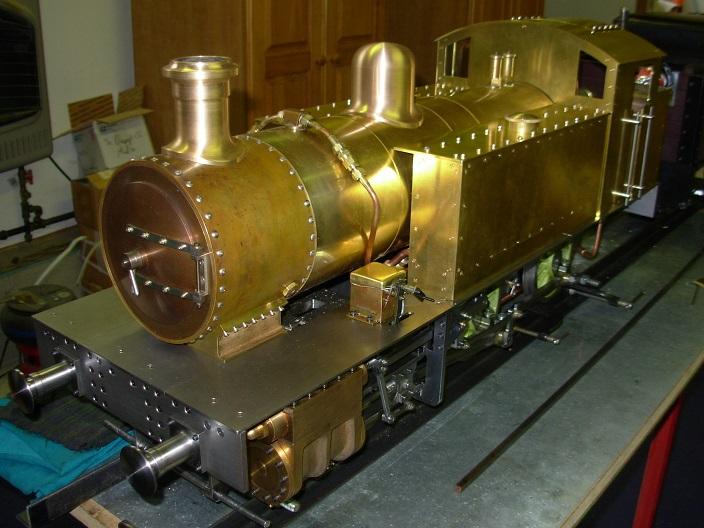How Long Will it Take?
More than anything else, building a live steam locomotive is an exercise in time management. During the first three years of construction, I averaged 2 hours in my shop, every day, working on the locomotive. Some days more hours, and some days none. But, on average, it has been 2 hours every day. I started waking up 1 hour earlier than normal so I could get in an hour of locomotive work, before heading off to my real job.
I started making the frames in June of 2015. The chassis first ran on compressed air in February of 2016. So, about 9 months to get it running on air, or about 540 hours.
The first steam test to the chassis was in April of 2016. The steam was supplied by a small boiler that I use to run my stationary steam engines. In order to get the chassis ready for live steam, there were a few things that had to be done in addition to what needed to be done for operating on air. Some of the additional things were the installation of the lubricator pump and the cylinder drain valves.
It was in May of 2017 that the locomotive was officially steam certified and operating with it's own boiler at the Finger Lakes Live Steamers track in Western New York. About 23 months, or, about 1400 hours from start, to operating on it's own boiler.
I have been running the locomotive since May of 2017 even though it was, and is, far from finished. After I got it running on it's own boiler, most of the work has been getting the water tanks, plate work and many little details finished.
The locomotive is nearly complete mechanically. I hope to paint the locomotive during the winter of 2018-2019. Currently, I have about 2000 hours into the build. This is actually the sort of number of hours that has been quoted to me by several people. If this were a particularly detailed locomotive, I think that number could go much higher. Also, if you have no experience with machine tools, the number will be much higher.
I plan to not work so much on the locomotive this year (2018) and do more of running it on my club track, working out any remaining bugs, and visiting a few other tracks. More fun, less work!
